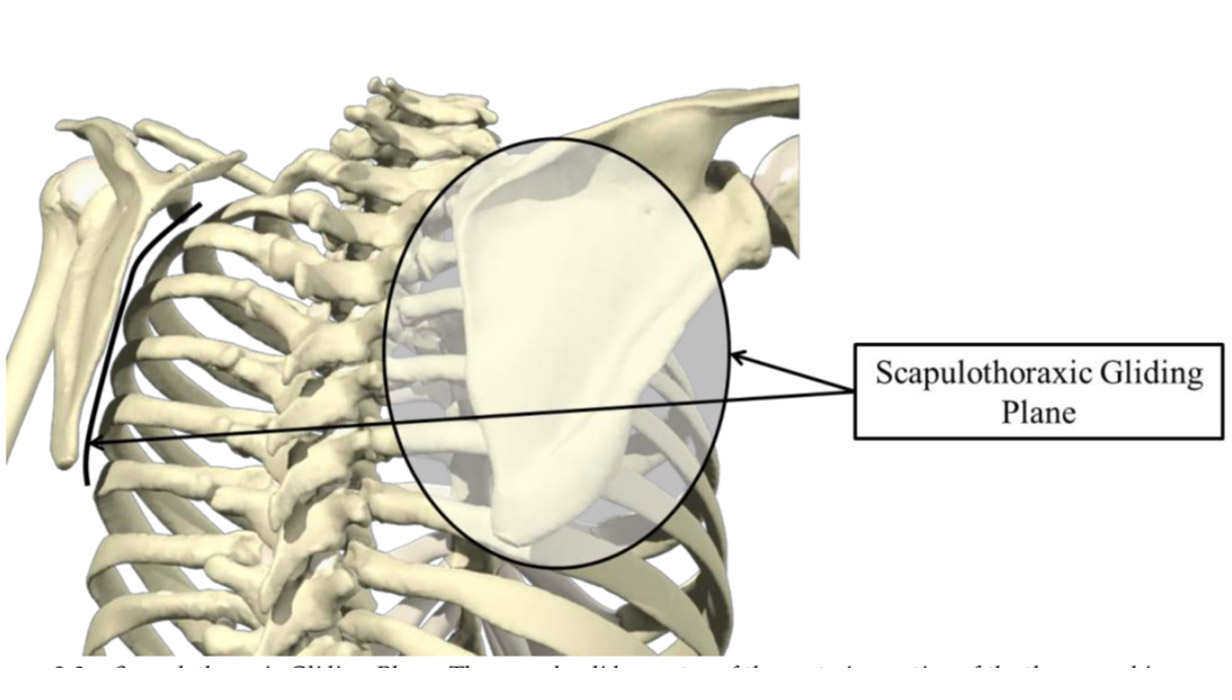UPDATE (11/05/2018) -: Part 2 has been published and can be read here.
The purpose of the Anatomy of the Shoulder series is to help educate our readers about the true function of the shoulder. Such information is key to understanding why certain therapies work better than others and why some do not work on certain individuals.
This is the first of a three-part series describing the anatomy of the shoulder. Part 1 describes the bony anatomy of the shoulder girdle and its features that allow us to have a huge range of motion.

What is the shoulder?
In order to understand how the shoulder works, we need to know what the shoulder is. The popular belief that the shoulder is a ball and socket joint is simply not true. The structure is far more complex and consists of no less than four individual joints (figure below). These four joints are:
- Glenohumeral joint (this is what most people refer to when they say shoulder).
- Acromioclavicular joint (or short for AC joint).
- Sternoclavicular joint (or short for SC joint).
- Scapulothoracic gliding plane (or short for STGP).
The 4 joints together allow a very large range of motion. This is the key purpose of the shoulder.


Glenohumeral joint
The glenohumeral joint is what people usually refer to when they say ‘ball and socket joint’. The top end of the upper arm (humerus) is shaped like a ball. It is similar to the shape of one third of a sphere to be more specific. However it is not entirely spherical, but rather elliptical. The socket end of the joint is known as the glenoid. Contrary to what some may have been led to belive, the socket does not hold the ball inside the joint. The glenoid is approximately one third of the size of the humeral head and is pear shaped.

Acromioclavicular joint
The acromioclavicular joint (AC) is at the top of the shoulder. It is known to act as a pivot point to help the scapula move when raising your arm, especially more so when raising your arm at above head height.

Sternoclavicular joint
The sternoclavicular joint (SC) is the intersection between the clavicle and the manubrium (sternum or chest bone). It is a saddle type or a double plane type joint. The purpose of this joint is to allow you to move your shoulders and arms especially with some force. It acts as a bony point of attachment for the whole shoulder and arms to the core of your body.
Scapulothoracic gliding plane
The scapulothoracic gliding plane (STGP) is not a typical joint. It doesn’t have a joint capsule or ligaments. Nor does it have articulating surfaces that are coated in cartillage. It is the relative movement between the scapula and the thorax. It’s movement or articulation is highly dependant on the AC joint and the SC joint. The closed chain of the AC, SC and the STGP provide the shoulder the ability to move. This video by Kristina List describes the STGP really well.
Part 2 describes the passive soft tissues and structures that surround and are attached at the joints. Part 3 describes the muscles that actuate the shoulder girdle and why it is the most important set of organs for keeping the shoulder stable.

